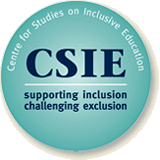
supporting inclusion, challenging exclusion
School placement trends

CSIE has been reporting, since the 1980s, school placement trends of all local authorities in England (i.e. the proportion of children sent by each local authority to separate special schools within or outside the local authority’s boundaries). This detailed level of analysis, ranking of all local authorities from the one with the lowest to the one with the highest proportion of children in special schools, is unique to CSIE.
Work on the latest issue in this series, covering the years 2014-17, has now been completed with the help of a grant from the British Academy, to whom we remain grateful. We have, once again, worked in collaboration with researchers at the University of Exeter: Professor Brahm Norwich, Dr Alison Black and Dr Yi Liu (who has since moved to the University of Bristol). Findings of this research were presented at an open seminar in London in April 2019.
For the first time in the history of the Trends series, we are making the latest information freely available online: a report written by Dr Alison Black and Professor Brahm Norwich, and a web application developed by Dr Yi Liu which includes: a) an interactive map; b) detailed information on rates of segregation for each local authority; and c) lists of all local authorities arranged from the least to the most segregating for each of the years examined. A manual is also available to help users access the information on the web application.
By referring to rates of segregation, this research adopts terminology put forward by the UN Committee on the Rights of Persons with Disabilities. In its General Comment no. 4, the Committee explains how segregation, integration and inclusion should be understood, given that Article 24 (Education) of the UN Convention on the Rights of Persons with Disabilities requires the development of an inclusive education system at all levels. Segregation, which is not mentioned in Article 24, is defined as the education of disabled students in separate settings, isolated from non-disabled students. Integration, the Committee says, is the process of placing disabled students in existing mainstream institutions and expecting them to adjust to the requirements of these institutions. Inclusion, on the other hand, is the process of “systemic reform” involving changes in content, methods, approaches, structures and strategies in education, so that all students can have an equitable and participatory learning experience.
As has always been the case in the Trends series, this research is merely descriptive: it gives information on the proportion of pupils placed in different types of settings, without commenting on pupils’ experiences or attempting to explain the trends observed, both of which are beyond the remit of this research.
This research shows that there has been a rising national trend of special school placements over the last 10 years. Like other Trends reports before it, it also suggests a postcode lottery for inclusive education: there continues to be huge variation in the rates of segregation into special schools of children with Education and Health Care Plans. Some local authorities consistently rely more on mainstream settings, while others regularly send high proportions of children to special schools. In 2017 the proportion of children sent to special schools ranged from 0.18% (the equivalent of 1 child in every 552) in the London Borough of Newham, to 1.75% (the equivalent of 1 child in every 57) in Torbay. That is close to a tenfold difference! While there are small variations from year to year, these patterns remain relatively constant: most local authorities send to special schools roughly the same proportion of pupils from year to year.
Such significant differences between local authorities cannot easily be explained by the size or type of a local authority or by its social or geographical characteristics. Further research is needed in order to understand these diverse patterns.
Despite every local authority being subject to the same national policies and legislation, CSIE Trends reports keep bringing to light disturbing local variations. The significance of this research is twofold: up-to-date information can empower parents to make better informed choices for their children’s education, and it can help parents, professionals and others to lobby for change. Previous reports in the Trends series are available from CSIE.
Page last updated: Tuesday 22 August 2023